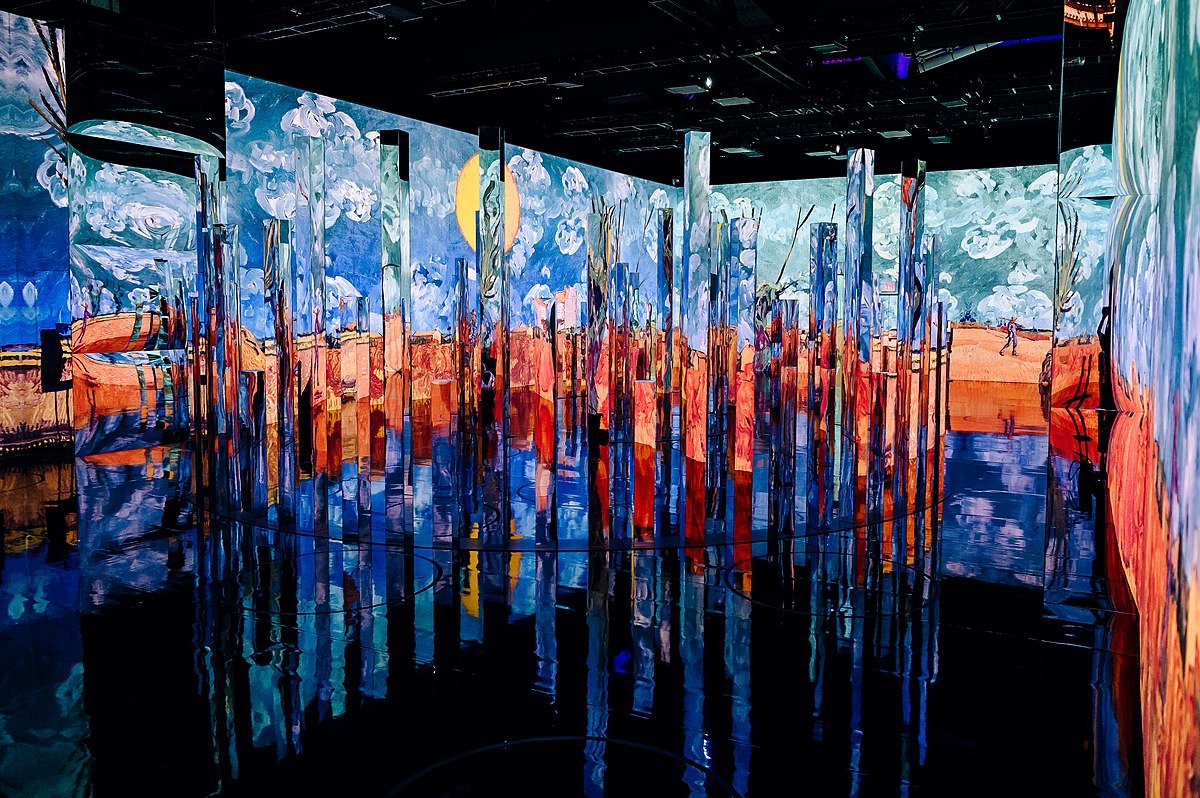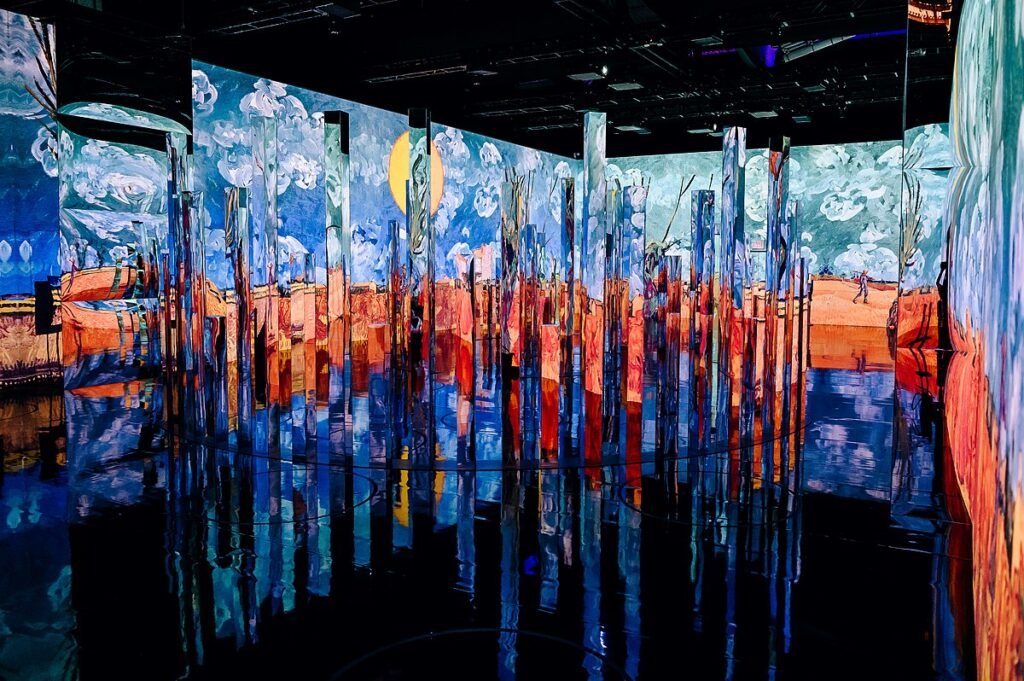Immersive art is a new form of artistic expression that blurs the line between the viewer and the artwork. It creates an experience that engages multiple senses and invites the viewer’s full participation. Unlike traditional art forms that are observed from a distance, immersive art allows you to step inside the artwork, becoming an integral part of the experience. This unique approach to art is reshaping how we interact with creative works and is gaining popularity across the globe.
How It Started
The concept of immersive art is not really new. It can be traced back to the early 20th century with the rise of installation art, where artists created environments that transformed entire spaces into works of art. Nowadays, recent technological advancements have significantly expanded its possibilities allowing for more dynamic, interactive, and multisensory experiences.
Immersive art installations often use a combination of large-scale visuals, soundscapes, tactile elements, and even virtual or augmented reality. These elements work together to create a cohesive environment where the audience is not just a spectator but an active participant. This results in a deeply engaging experience that can evoke powerful emotions and provoke thought in ways that traditional art forms may not.
The Benefits of Immersive Art
Enhanced Engagement
One of the most significant benefits of immersive art is its ability to captivate audiences. By engaging multiple senses, it creates a more compelling and memorable experience. Viewers are not just observing art; they are living it. This level of engagement can lead to a deeper appreciation and understanding of the artwork.
Emotional Impact
Immersive art can evoke strong emotional responses. The combination of sound, visuals, and physical space creates an atmosphere that resonates deeply with viewers, making them feel a range of emotions from awe to introspection. This emotional connection can be a powerful tool for artists to convey their message.
Accessibility
Immersive art can be more accessible to a broader audience, including those who may not typically engage with traditional art forms. The interactive and sensory nature of immersive art can appeal to people of all ages and backgrounds, making it a more inclusive form of expression.
Educational Value
Immersive art can also serve as a valuable educational tool. By creating environments that simulate real-world scenarios or historical events, it can provide a unique way to learn and explore different subjects. Museums and educational institutions increasingly use immersive installations to enhance their exhibits and engage visitors.
Popular Immersive Artworks
Some of the most impressive and popular immersive art include the Van Gogh Immersive Experience, which has toured cities around the world. This installation uses large-scale projections to bring Vincent van Gogh’s paintings to life, allowing viewers to step into the world of his art. The experience is enhanced with soundscapes and animations that create a fully immersive environment.
Another notable artist in the immersive art scene is Yayoi Kusama, known for her “Infinity Rooms.” These installations use mirrors, lights, and water to create the illusion of endless space, inviting viewers to lose themselves in the infinite. Kusama’s work has been exhibited in major museums worldwide, attracting large audiences eager to experience her unique vision.
Wrap up
Immersive art represents a bold new direction in the world of artistic expression. By creating experiences that engage multiple senses and invite active participation, it offers a more engaging, emotional, and accessible way to interact with art.
As technology continues to evolve, the possibilities for immersive art will only expand, promising even more innovative and captivating experiences in the future.






